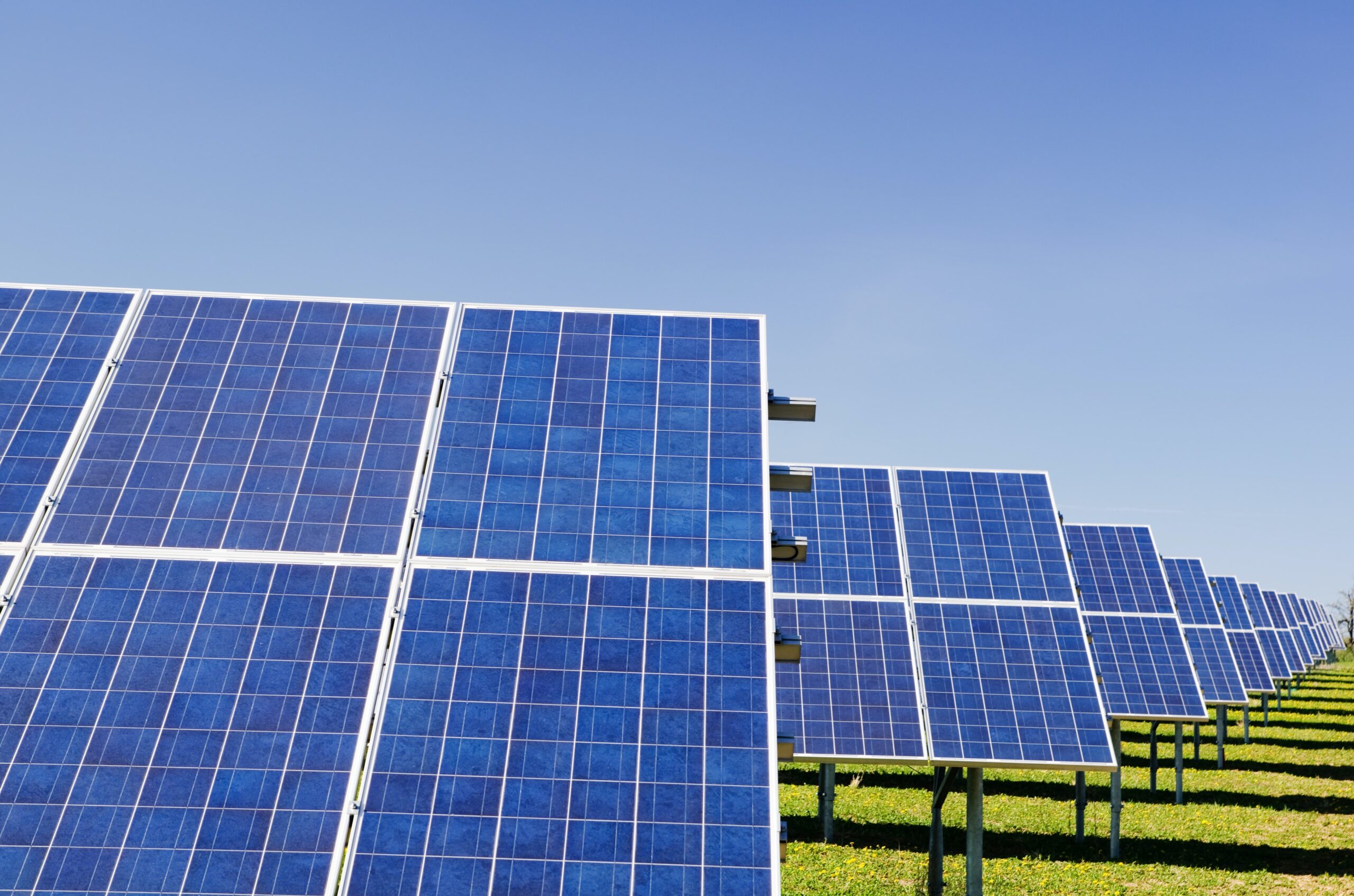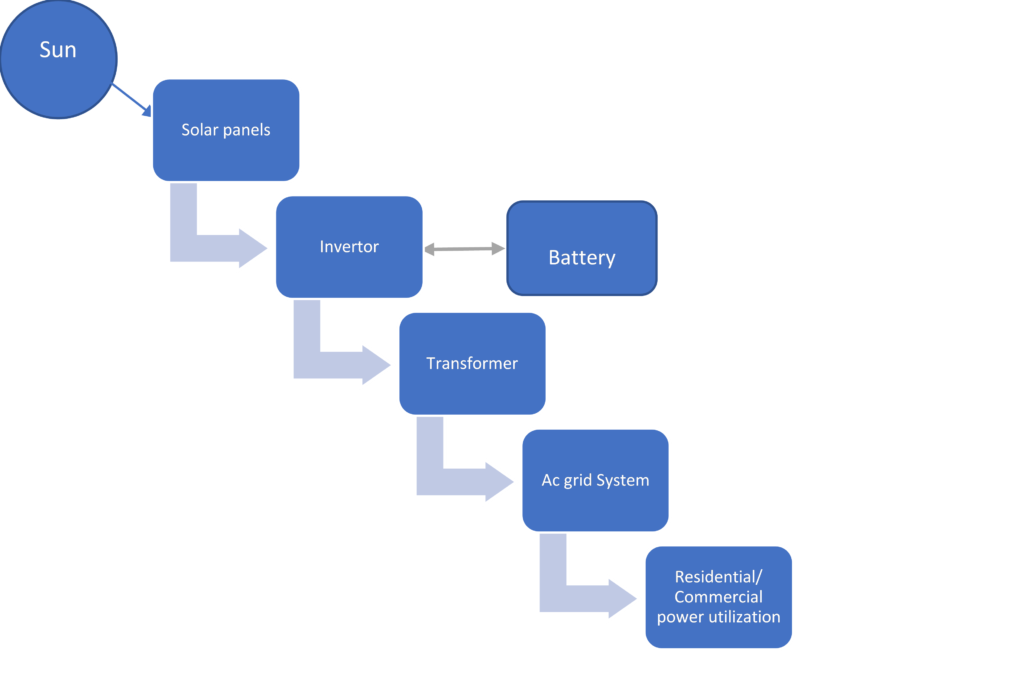Uncategorized
Solar Energy: Classification, Components, Advantages, & Disadvantages

Solar power or solar energy is renewable energy that is generated from the sun’s energy. This energy can be transformed through solar panels or solar thermal systems, to produce electricity, heat, or other forms of energy. The energy in sun rays is one of the most abundant and renewable sources of energy available to us and has the potential to power our homes, businesses, and transportation systems in a sustainable and environmentally-friendly way.
Energy is an essential requirement of our daily life and SUN is a great source of energy. For the Store, the transition of the sun’s energy to electric energy required a system called Solar Power System.
Classification of Solar Energy Plant
Based on the production level and method used for electricity production we can classify it into many types:
Based on Production Type:
- Photovoltaic solar energy (PV)
- Solar thermal Energy (STE)
- Concentrated Solar Power (CSP)
- Building Integrated Photovoltaics (BIPV)
Based on Distribution Grid Type:
- On-Grid Solar Energy
- Off-Grid Solar Energy
- Hybrid Solar Energy
Table of Contents
Further, we discuss briefly the above classification for a basic understanding of terminology
Based on Production Type:
1. Photovoltaic solar energy (PV)
PV Solar panels are used for electricity generation that works on the photoelectric effect. Photovoltaic cells which are manufactured by Silica (soil) after doping of Aluminium and Phosphorus generates electricity by receiving solar energy from PV cell.

2. Solar Thermal Energy
This is similar thermal power plant which is used to generate electricity by Coal or nuclear. Where coal is used to heat water, vapor pressure is used to rotate the turbine and generate electricity. Here a Solar Thermal Power plant Solar energy is used to heat water instead of coal

3. Concentrated Solar Power (CSP)
In Concentrated Solar Power on top of Tower water stored, by a lot of mirrors pointing towards water tower place around tower which reflect sun’s rays and these sun’s rays heat water, which water vapor used to generate electricity by turbine and generator.

4. Building Integrated Photovoltaics (BIPV)
Solar Panels are used as building slabs or walls that dual function in buildings. Electricity generation as well as wall or slab of a building. It is a cost-effective and space-saving method of solar energy generation.

Read Also: E-waste Management Project: Effects, Challenges, and Solution
Based on Distribution Grid Type:
1. On Grid Power plant
In an On-grid power plant, no battery is used for storage. If extra power is generated by solar power plants it will be directly supplied to the main distribution line. And In case of deficiency of electricity Power will be consumed by main distribution line. Extra power supply to distribution line will be a good source of income nowadays. This is most popular to install on grid Solar power plants.
2. Off-Grid power plant
Off-grid power plants are installed with batteries to store electricity which can be used at night when in absence of sun’s energy, no electricity generates by solar panels. Off-grid power plants can be used where no electrical connection is possible by the grid.
3. Hybrid Power plant
For electricity storage batteries are installed as well as remaining electricity after consumption by applicants and stored by batteries send to the grid. This type of solar power plant is called a Hybrid Power plant.
Component Of Solar Energy Plant
- Solar Panels
- Invertor
- Storage Devices (Batteries)
- Transformer
- Ac grid system
- Residential/commercial power Utilization

Solar Power Plant All Component and working Processes
1. Solar panels:
These are the devices that capture the energy from the sun and convert it into electricity.
2. Inverter:
This device converts the direct current (DC) electricity produced by the solar panels into alternating current (AC) electricity that can be used by household appliances and fed into the power grid.
3. Batteries:
These are used to store excess electricity generated by the solar panels during the day so that it can be used at night or during times when there is less sunlight.
4. Charge controller:
This device regulates the flow of electricity between the solar panels and the batteries to ensure that the batteries are not overcharged or damaged.
5. Monitoring system:
This system tracks the performance of the solar panels and other components of the system, providing feedback on energy production and any potential issues.
6. Power grid connection:
Solar power systems can be connected to the traditional power grid, allowing excess electricity to be fed back into the grid and reducing the reliance on non-renewable energy sources.
What are the benefits of solar power systems?
Solar Power Systems have a lot of advantages which are:
- Renewable and sustainable: Solar power is a renewable and sustainable energy source that doesn’t emit any greenhouse gases or other pollutants, making it an environmentally-friendly alternative to traditional fossil fuels.
- Cost-effective: While the initial cost of installing a solar power system may be high, it can ultimately save you money on your energy bills in the long run. Depending on where you live, you may also be eligible for government incentives or tax credits that can help offset the cost of installation.
- Low maintenance: Solar panels require very little maintenance and can last for decades with proper care. This means that once your solar power system is installed, you can enjoy clean and free energy for years to come. Almost 25 years after the installation of solar panels no need to replace them.
- Energy independence: By generating your own electricity with a solar power system, you can become less reliant on the grid and reduce your dependence on traditional energy sources.
- Increased property value: A solar power system can increase the value of your property and make it more attractive to potential buyers if you decide to sell your home or business.
What are the Disadvantages of solar power?
While solar power has many benefits, there are also some disadvantages to consider, including:
- High upfront cost: The initial cost of installing a solar power system can be high, which may make it difficult for some people to afford. However, over time, the system can save money on energy bills and potentially pay for itself.
- Weather-dependent: Solar power generation is dependent on the availability of sunlight, which means that it may not be a reliable source of energy in areas with inconsistent or low levels of sunlight. However, advancements in solar technology and the availability of battery storage systems are helping to address this issue.
- Land use: Large-scale solar power systems may require a significant amount of land, which can be a challenge in densely populated areas. However, rooftop solar installations and smaller systems can help mitigate this issue.
- Maintenance and repair: While solar panels are low-maintenance, they do require occasional cleaning and inspection to ensure they are working properly. Additionally, if a panel is damaged or malfunctions, it may need to be repaired or replaced, which can be costly.
- Energy storage limitations: While battery storage systems can help address the issue of inconsistent sunlight, they can also be expensive and may not be able to store enough energy to meet all of a household or business’s energy needs.
Overall, while solar power has many benefits, it may not be the best option for everyone. It’s important to consider your energy needs, location, and budget when deciding whether a solar power system is right for you.
References







